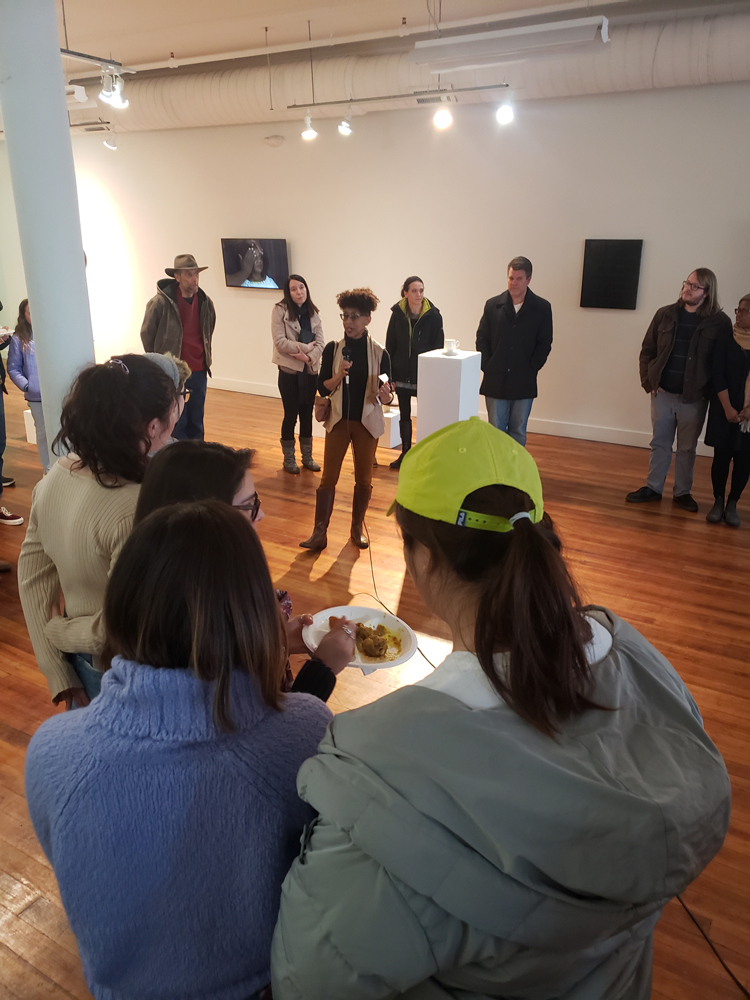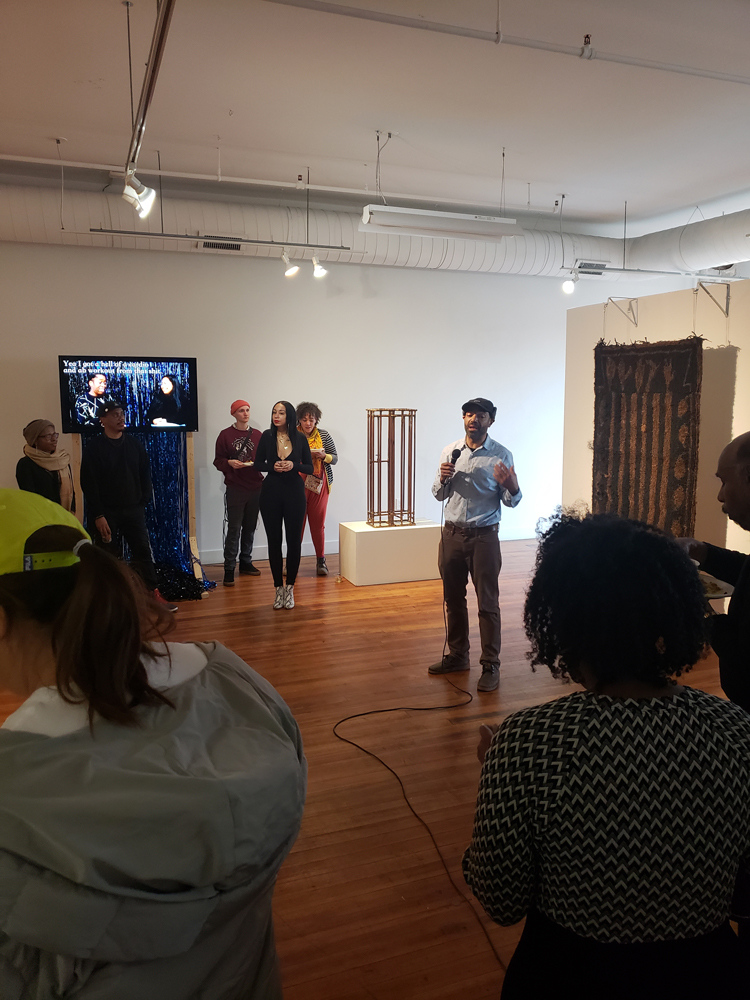In the Spring of 2020, a class taught by Assistant Professor Justin Coleman “jstn clmn,” Black Art 2020, tapped into two Denison exhibitions featuring Black artists. They became a platform to look at how these artists embraced, rejected, or even redefined contemporary art.
As students explored the life and works of Black artists during the later 19th, 20th, and early 21st centuries, linking themes and history, they developed the vocabulary of contemporary art.
“I loved how I could see a student’s mind latch on to a particular piece of art. When that would happen, they would unpack the work in the most amazing and astute ways,” says clmn.
clmn notes, for example, against the background of the great migration toward Harlem and other urban cultural hubs, “We discussed the emergence and political importance of a new class of Black visual artists — both painters and sculptors.”
Students explored the validation, documentation, and even romanticization of Black life that paralleled the intellectualism of the time by thought leaders of the time such as John Locke, or W.E.B. DuBois. They discussed the western philosophy projected in paintings alongside the cultural climate and social experience of Black spaces.
Students were able to interact with pivotal work by Black artists in person thanks to the Denison Museum exhibition, “Say It Loud,” and the Denison Art Space in Newark exhibition “We Out There.”
The “Say It Loud” exhibition features the work of world-renowned contemporary Black artists who document and challenge dominant historical perspectives and events. Works come from an array of Guggenheim, Whitney, and MoMA artists, including world-renowned artists Kehinde Wiley (Obama’s official portraitist), Kerry James Marshall, Alison Saar, Trenton Doyle Hancock, Mickalene Thomas, Hank Willis Thomas, and Sanford Biggers.
“We Out Here,” the final show at the Denison Art Space in Newark before the COVID-19 pandemic, was a celebration of the 50th year of the Black Studies Program at Denison. clmn, who curated the show, notes it was, “…representative of a younger contemporary generation of Black identities and built on a plurality of language and perception in Black culture.”
Both shows were incredibly important to the students’ experience. “As we would have discussions, we could refer to work we had seen in person,” says clmn, speaking in the summer of 2020. “There are aspects of the work that I find especially reverberant in the current surge of support this summer for BLM.”
Looking back, clmn summarizes, “The Black Art 2020 course was the first of its kind at Denison, presenting a way to look at and survey the history of Modern Art through a Black lens. Many of the insights the students offered showed a critical sensitivity and awareness to the politics of race,” He adds, “I am impressed by the richness of their thinking and the passion they have to act on their values.”









